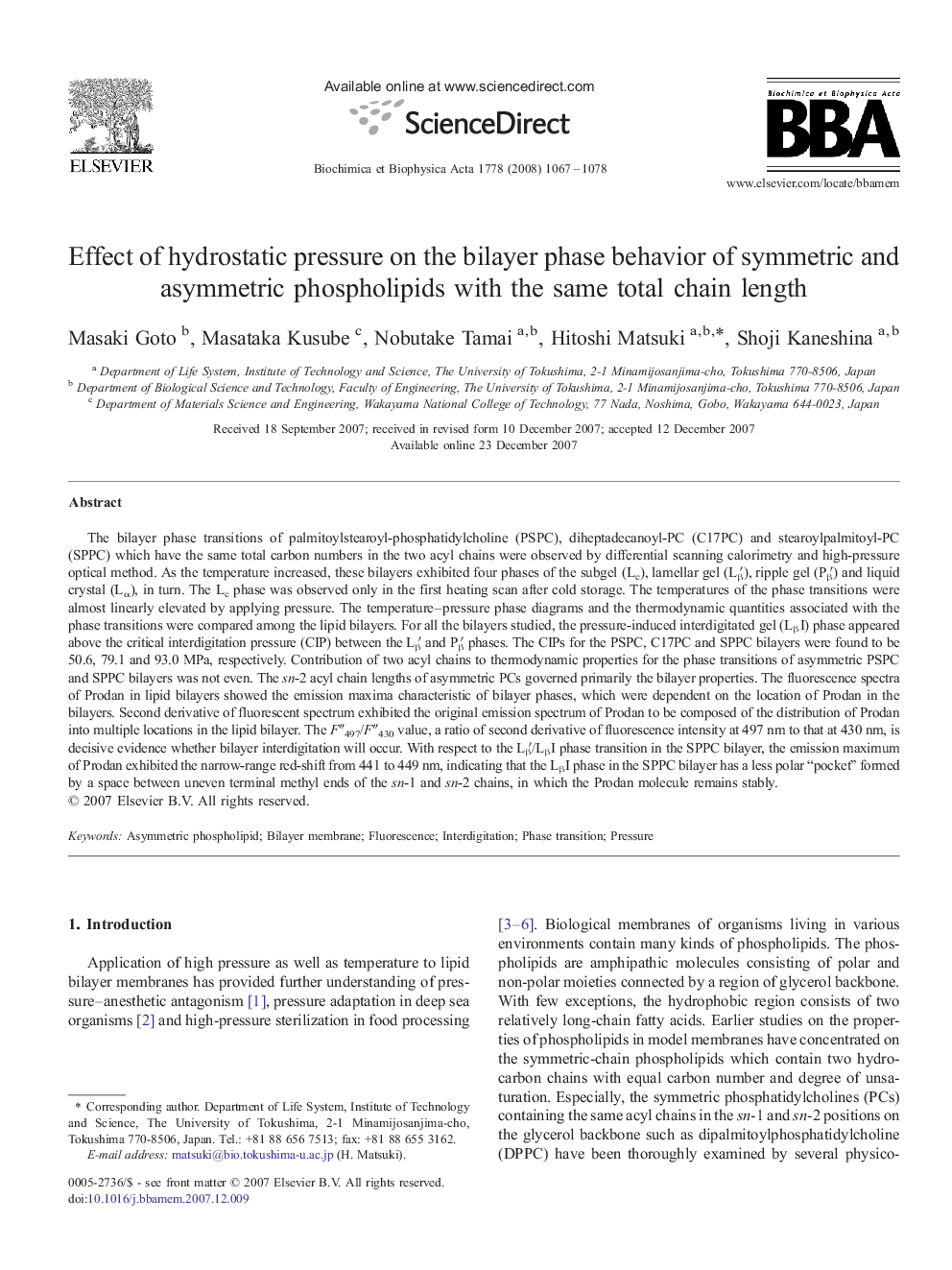| Article ID | Journal | Published Year | Pages | File Type |
|---|---|---|---|---|
| 1945607 | Biochimica et Biophysica Acta (BBA) - Biomembranes | 2008 | 12 Pages |
The bilayer phase transitions of palmitoylstearoyl-phosphatidylcholine (PSPC), diheptadecanoyl-PC (C17PC) and stearoylpalmitoyl-PC (SPPC) which have the same total carbon numbers in the two acyl chains were observed by differential scanning calorimetry and high-pressure optical method. As the temperature increased, these bilayers exhibited four phases of the subgel (Lc), lamellar gel (Lβ′), ripple gel (Pβ′) and liquid crystal (Lα), in turn. The Lc phase was observed only in the first heating scan after cold storage. The temperatures of the phase transitions were almost linearly elevated by applying pressure. The temperature–pressure phase diagrams and the thermodynamic quantities associated with the phase transitions were compared among the lipid bilayers. For all the bilayers studied, the pressure-induced interdigitated gel (LβI) phase appeared above the critical interdigitation pressure (CIP) between the Lβ′ and Pβ′ phases. The CIPs for the PSPC, C17PC and SPPC bilayers were found to be 50.6, 79.1 and 93.0 MPa, respectively. Contribution of two acyl chains to thermodynamic properties for the phase transitions of asymmetric PSPC and SPPC bilayers was not even. The sn-2 acyl chain lengths of asymmetric PCs governed primarily the bilayer properties. The fluorescence spectra of Prodan in lipid bilayers showed the emission maxima characteristic of bilayer phases, which were dependent on the location of Prodan in the bilayers. Second derivative of fluorescent spectrum exhibited the original emission spectrum of Prodan to be composed of the distribution of Prodan into multiple locations in the lipid bilayer. The F″497/F″430 value, a ratio of second derivative of fluorescence intensity at 497 nm to that at 430 nm, is decisive evidence whether bilayer interdigitation will occur. With respect to the Lβ′/LβI phase transition in the SPPC bilayer, the emission maximum of Prodan exhibited the narrow-range red-shift from 441 to 449 nm, indicating that the LβI phase in the SPPC bilayer has a less polar “pocket” formed by a space between uneven terminal methyl ends of the sn-1 and sn-2 chains, in which the Prodan molecule remains stably.
